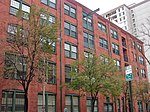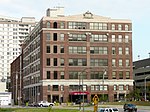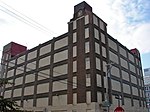Community College of Philadelphia
1965 establishments in PennsylvaniaCommunity colleges in PennsylvaniaEducational institutions established in 1965Logan Square, PhiladelphiaTwo-year colleges in the United States ... and 1 more
Universities and colleges in Philadelphia

The Community College of Philadelphia (CCP) is a public community college with campuses throughout Philadelphia, Pennsylvania. The college was founded in 1965 and is accredited by the Middle States Commission on Higher Education. It offers over 100 associate degree and certificate programs through its four locations.CCP's athletic teams compete in the Eastern Pennsylvania Athletic Conference (EPAC) of the National Junior College Athletic Association (NJCAA). They are collectively known as the Lions and have more than 50 championships as current members of the EPAC and members of the former Pennsylvania Collegiate Athletic Association.
Excerpt from the Wikipedia article Community College of Philadelphia (License: CC BY-SA 3.0, Authors, Images).Community College of Philadelphia
Spring Garden Street, Philadelphia Center City
Geographical coordinates (GPS) Address External links Nearby Places Show on map
Geographical coordinates (GPS)
| Latitude | Longitude |
|---|---|
| N 39.962883 ° | E -75.166299 ° |
Address
Community College of Philadelphia - Main Campus
Spring Garden Street 1700
19130 Philadelphia, Center City
Pennsylvania, United States
Open on Google Maps









